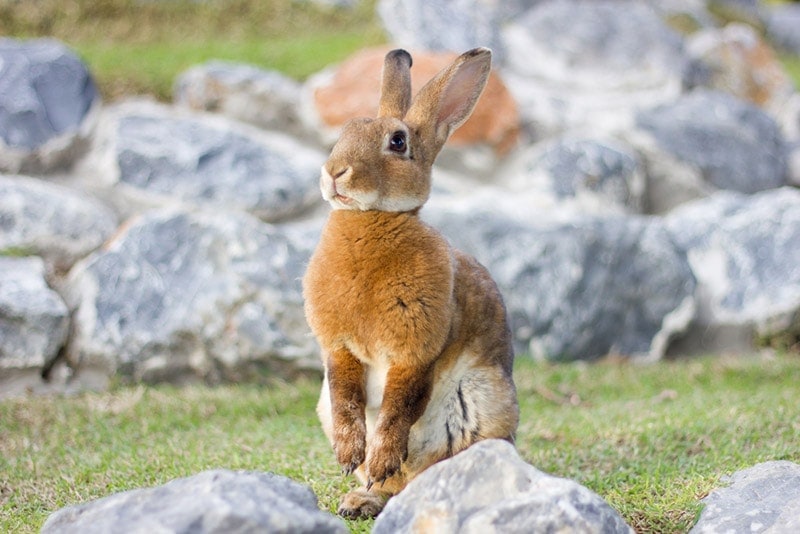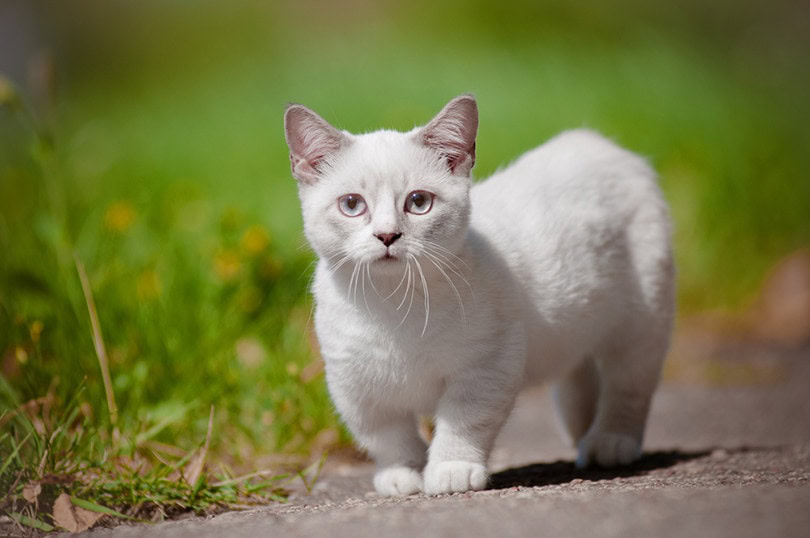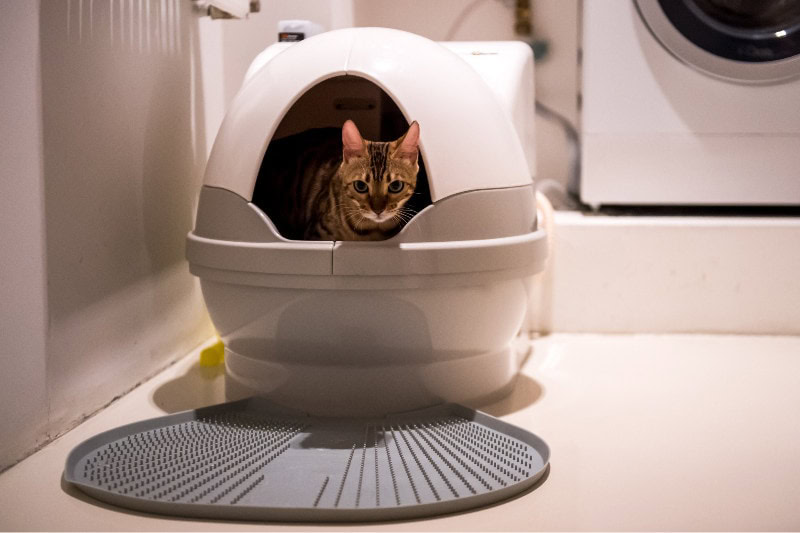VET APPROVED

The information is current and up-to-date in accordance with the latest veterinarian research.
Learn more »Rabbits make great companion pets, but their body language is a little different than dogs or cats. If you don’t know what you’re looking at, it can be easy to misinterpret rabbit positions and behavior incorrectly.
Here are some common rabbit positions and what they may mean.

The 12 Rabbit Body Positions & Their Meanings
1. Chinning
Rabbits have scent glands under their chins that they use to mark their scent. “Chinning” is when a rabbit rests their chin on an object, which could either be to identify it as their territory or to simply map out where it’s been.
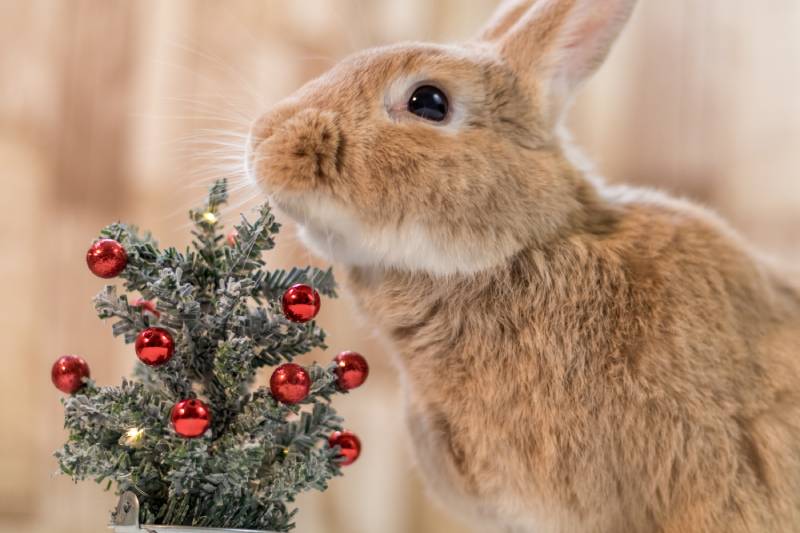
2. Flopping
Flopping is a unique behavior that’s often surprising to new rabbit owners. When rabbits “flop,” they flop over onto their sides and expose their belly. It can look alarming at first, but it’s just a sign that your rabbit is completely comfortable and relaxed.
That said, if your rabbit is showing signs of distress, such as difficulty breathing or tremors, then you could be mistaking a medical condition for this common flopping behavior.
3. Flattening
Flattening is when a rabbit flattens themselves completely against the ground, usually with a tense body. This is a proactive posture that means the rabbit is sensing a possible threat and is ready to run if necessary.
4. Binky
A “binky” is when a rabbit jumps into the air, perhaps kicking and twisting. This is a good, natural behavior that shows your rabbit is feeling playful. After all, this is what rabbits do naturally.

5. Body Tension with Ears Pinned
If your rabbit is lunging forward or tensing their body with their ears laid back and an upright tail, it’s an angry or territorial behavior. It’s trying to warn you that it doesn’t like what you’re doing, and if you don’t stop, it could escalate to more aggressive behaviors.
6. Lying With the Head Flat on the Ground
If your rabbit is lying with their head flat on the ground, it’s showing a sign of submission. It could be asking to be pet or groomed as well.
7. Periscoping
One of the few clear-cut behaviors, rabbits that “periscope” are curious and trying to survey their surroundings. If you think about a rabbit in the wild, this position offers an advantage for rabbits to scope out predators or look for companions.
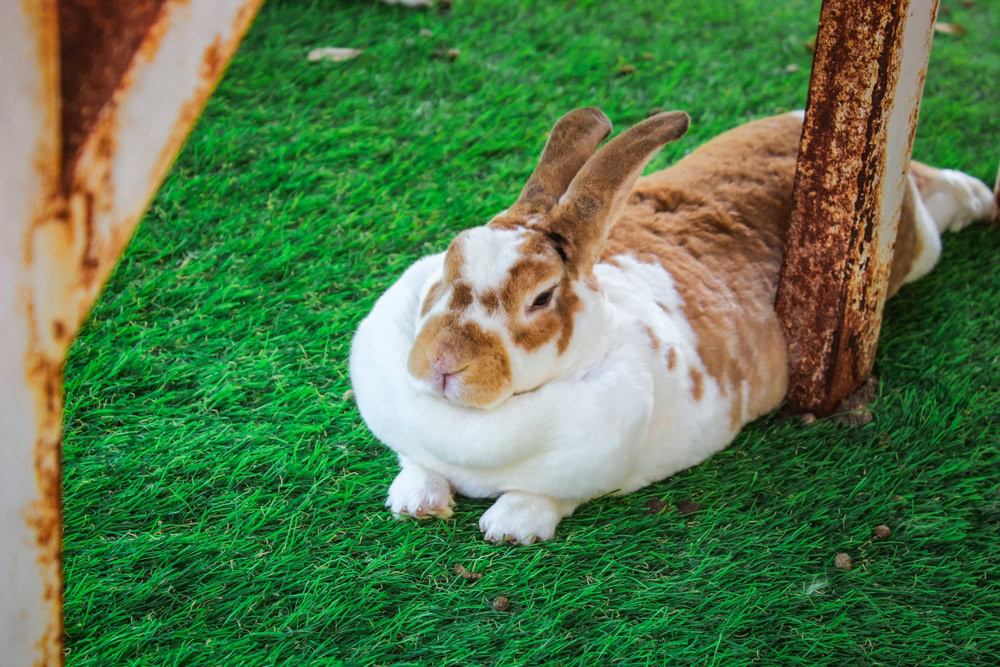
8. Flat Ears
There’s a subtle difference between ears that are pinned back and ears that are flat back; it all comes down to the rest of the body language. As mentioned, ears that are flat back with a tense body are a defensive or aggressive posture. Conversely, if the ears lie flat back with a relaxed body, the rabbit just rests.
9. Upright Ears
Rabbit ears that are straight up usually mean your rabbit is curious or alert, looking and listening to what’s going on around it. The ears are usually pricked if something catches your rabbit’s attention.
10. Ears Relaxed Back
Rabbit ears in a neutral position, somewhat resembling how Easter rabbits are shaped, are a sign that your rabbit is relaxed and content.
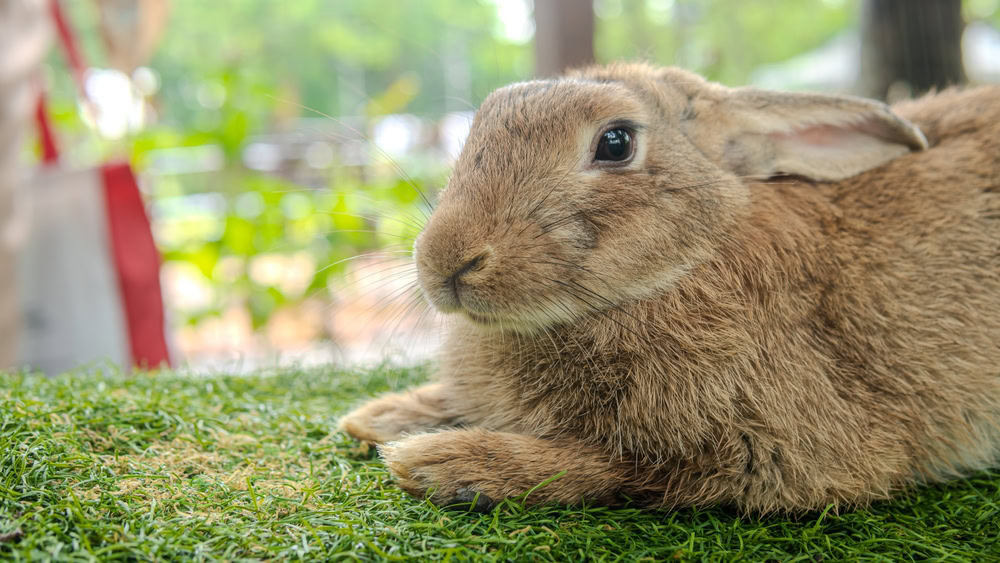
11. Hunched
A hunched rabbit is an uncomfortable rabbit. Along with the hunched-over body, rabbits in this position will often rest more of their weight onto their front paws to avoid their belly touching the ground. This is a sign that there’s something wrong with your rabbit’s digestive system that may require a vet, such as GI stasis.
12. Loafing
This can look similar to hunching, but it’s quite different. Loafing is when your rabbit fluffs itself into a ball that resembles a loaf of bread. This is done to conserve body heat and means your rabbit is comfortable and possibly ready to go to sleep.

Other Rabbit Body Language
Rabbits are expressive creatures, but you have to know what they’re trying to say. Aside from these positions, rabbits communicate their feelings with behaviors like:
- Nipping, which could be a “love bite” or a sign that your rabbit wants you to stop what you’re doing.
- Grunting, which is an angry reaction toward someone should be taken as a sign to back off before it escalates to biting or scratching.
- Thumping, an attention-seeking behavior to express fear or alert others to something they saw or heard.
- Nudging with the nose, which could mean a lot of different things from playing to establishing territory.
- Licking, which is a sign of affection.
- Screaming, which is a sign of terror or extreme pain, is considered an emergency.
- Tail wagging, which is basically a rabbit feeling annoyed.
- Tooth grinding, which could be a sign of contentment or a sign of a medical problem. The latter is usually more extreme, louder, and persistent.


Conclusion
These positions are important to know to understand what your rabbit is trying to express, even if some of them are a bit confusing. Just like dogs and cats, spending time with rabbits and analyzing their body language along with the context and environment gives you context clues into your rabbit’s feelings and it becomes easier to interpret the subtleties of their body language and behaviors.
Featured Image Credit: Preechaya Kaewsuwan, Shutterstock
